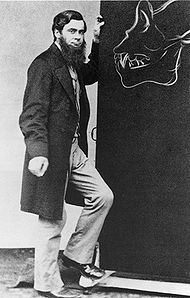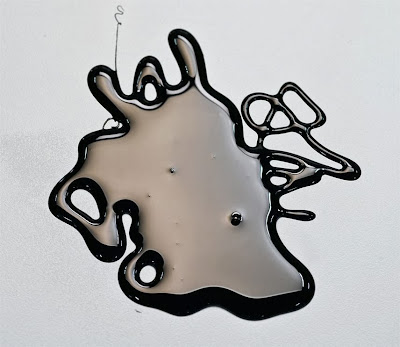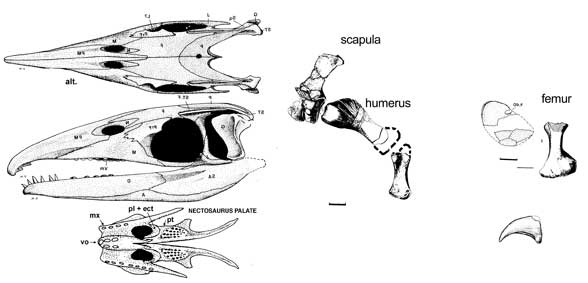 |
Archaeopteryx had a wing that was different from that of modern birds, and, as seen here, might have been a glider more than a powered flyer. Art by Carl Buell, courtesy of Nicholas Longrich.
| |
|
Paleontologists have been investigating and debating this essential aspect of avian evolution for over a century. Indeed, there have been almost as many ideas as they have been experts, envisioning scenarios of dinosaurs gliding through trees, theropods trapping insects with their feathery wings and even aquatic Iguanodon flapping primitive flippers as flight precursors (I didn’t say that all the ideas were good ones). The biomechanical abilities of bird ancestors and their natural history has always been at the center of the debate, and a new Current Biology paper adds more fuel to the long-running discussion.
At present, hypotheses for the origin of avian flight typically fall into one of two categories. Either bird ancestors accrued the adaptations necessary for flight on the ground and, through evolutionary happenstance, were eventually able to take off, or small tree-dwelling dinosaurs used their feathery coats to glide between trees and, eventually, flapped their way into a flying lifestyle. There are variations on both themes, but feathers and the characteristic avian flight stroke are at the core of any such scenario. In the case of the new paper, Yale University paleontologist Nicholas Longrich and colleagues draw from the plumage of early bird Archaeopteryx and the troodontid Anchiornis to examine how feathers changed as dinosaurs started to fly.
In modern flying birds, Longrich and coauthors point out, the wing arrangement typically consists of “long, asymmetrical flight feathers overlain by short covert feathers.” This pattern creates a stable airfoil but also lets the flight feathers separate a little during the upstroke of a wing beat, therefore reducing drag. When the paleontologists examined the fossilized wings of Archaeopteryx and Anchiornis, they found different feather arrangements that would have constrained the flight abilities of the Jurassic dinosaurs.
Both prehistoric creatures had long covert feathers layered on top of the flight feathers. Anchiornis, in particular, appeared to have an archaic wing form characterized by layers of short, symmetrical flight feathers and similarly shaped coverts. Archaeopteryx showed more specialization between the flight feathers and the coverts but still did not have a wing just like that of a modern bird. As a result, Longrich and collaborators hypothesize, both arrangements would have stabilized the wing at the cost of increased drag at low speeds, making it especially difficult for Anchiornis and Archaeopteryx to take off. As an alternative, the researchers suggest that these dinosaurs might have been parachuters who jumped into the air from trees, which might hint that “powered flight was preceded by arboreal parachuting and gliding.”
The trick is determining whether Anchiornis and Archaeopteryx actually represent the form of bird ancestors, or whether the dinosaurs, like Microraptor, were independent experiments in flight evolution. At the Society of Vertebrate Paleontology conference in Raleigh, North Carolina last month, flight expert Michael Habib quipped that all that was needed to make dromaeosaurs aerially competent was the addition of feathers. If Habib is right, and I think he is, then there could have been multiple evolutionary experiments in flying, gliding, wing-assisted-incline-running and other such activities. There’s no reason to think that flight evolved only once in a neat, clean march of ever-increasing aerodynamic perfection. Evolution is messy, and who knows how many ultimately failed variations there were among flight-capable dinosaurs?
The three-step Anchiornis-Archaeopteryx-modern bird scenario of wing evolution fits our expectations of what a stepwise evolutionary pattern would look like, but, as the authors of the new paper point out, shifting evolutionary trees currently confound our ability to know what represents the ancestral bird condition and what characterized a more distant branch of the feathered dinosaur family tree. We need more feathery fossils to further investigate and test this hypothesis, as well as additional biomechanical and paleoecological information to determine whether such dinosaurs really took off from trees. We must take great care in distinguishing between what an organism could do and what it actually did, and with so much up in the air, the debate on the origin of flight will undoubtedly continue for decades to come.
































